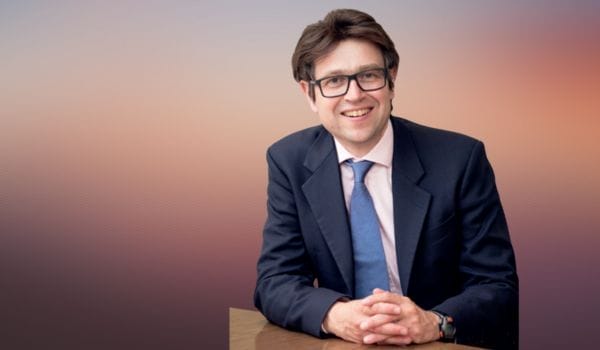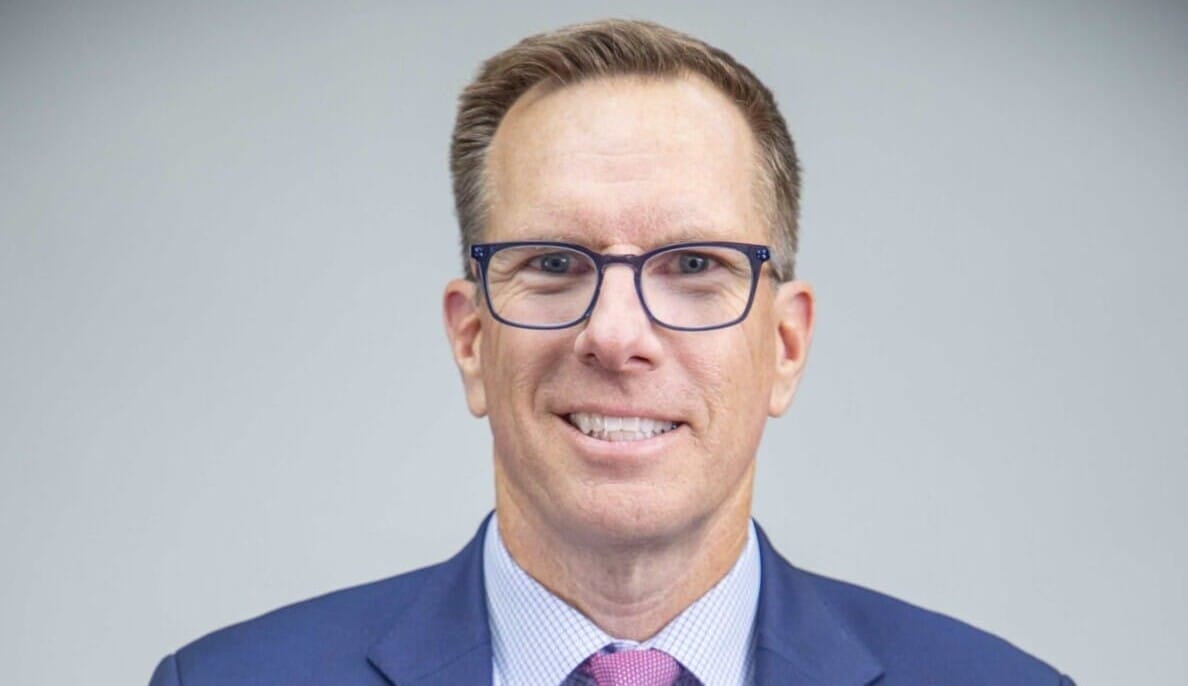An environment of increased macro volatility and geopolitical risk means investors should question assumptions, move towards more narrative-based scenario thinking and build resilience says Richard Tomlinson, chief investment officer of LPPI.
A healthy level of scepticism goes a long way in investing, and Richard Tomlinson chief investment officer of the £26 billion ($34 billion) LPPI, has it in spades.
In an environment he believes will become more volatile, and the impact of geopolitical uncertainty is untested, he’s “sceptical that everyone will play nice” and rates will come down.
In this context he’s encouraging his team to more explicitly acknowledge that investing is based on assumptions, and to look at uncertainty in views and forecasts, noting there is not one single reductive model.
“Don’t assume central banks can always come to the rescue with monetary stimulus, don’t assume the current (stable) plumbing of the world economy and world order will continue indefinitely, don’t assume rates and inflation will drop back to the levels of 2008 to early 2020’s,” he says in an interview with Top1000funds.com.
“Move away from point forecasts as these can be deeply misleading unless you are very careful with full disclose of all assumptions, methodology and all confidence intervals.”
Instead, he advocates for more narrative-based scenario thinking that is more dynamic and inclusive.
“Assume rates and inflation may be higher going forward and more volatile, don’t assume the rules-based order will continue indefinitely, assume that a big dislocation in markets will happen at some point but the cause could be any number of drivers,” he says.
With more dispersion and potential risk, it is more important than ever to invest carefully and be more dynamic in thinking and behaviours, and building resilience in portfolios is part of that.
“Investors need to try to be as aware as possible of the structural drivers of investment returns, like falling and stable inflation, low interest rates, tight credit spreads,” Tomlinson says. “And if any asset has relied on something being way above trend or structurally different to what is likely going forward, be careful.”
To this end Tomlinson suggests avoiding any asset that is reliant on “free money” or ultra-low rates and abundant financing, making him cautious on venture capital and any asset where the time-cost of money really matters.
“It drives you more towards investments with clear fundamentals,” he says. “That’s not to say more speculative investments can’t perform but time is now being priced more aggressively. Edward Chancellor’s excellent book The Price of Time is really helpful in framing this debate.”
He views the world as a bit more complicated than in the past, where allocators could invest globally and it didn’t really matter what you bought because everything went up.
“That’s not the case anymore. There is more dispersion and potential risk, we are seeing it in equities now,” he says.
“There is another layer of diligence going on for thinking about how the world might play out over the next few years. The risk profile of putting capital to work means the probability of something bad happening is high, it could be the geopolitics piece, but also some of the climate scenarios and physical risk in certain regions of the world is elevated.”
Building resilience
Tomlinson says building resilience in portfolios essentially means not building a portfolio for a single base case and embracing uncertainty.
“You do have to make some trade-offs but do it knowingly,” he says.
“Build a portfolio to perform in several higher-probability central cases and survive plausible negative ones. Narrative-based scenario analysis can help with this. The ‘what if’ questions and then some war-gaming of scenarios and the team making decisions to test thinking and reaction functions. My current view is don’t bet the farm on long rates falling right back down. But also don’t bet the farm against it!”
To this end, portfolio construction is key in terms of strategic asset allocation, but so is looking at underlying asset characteristics such as factor risks and cyclical exposure.
“We are more thoughtful on how we weight individual strategies within the buckets,” Tomlinson says.
LPPI doesn’t follow a full total portfolio approach, because underlying clients set an SAA, but its thinking is along similar lines in terms of a total portfolio view to achieve goals, rather than individual benchmark outperformance.
While the aim is to build a portfolio to survive in a range of scenarios, LPPI does tend to have more growth-orientated portfolios, leaning into inflation-linked assets, and is relatively underweight emerging markets. This is not based on a view of emerging markets per se, but rather, on an anchoring to the mandate of generating returns linked to long-dated UK liabilities.
And in areas like infrastructure and real estate there is a clear home bias because execution is more efficient with a team on the ground.
Tomlinson says this “structural alpha” or added value from execution is a natural advantage for LPPI, with its ability to fully originate and manage direct assets.
“Within our investment team alone, we have over 15 people focused on direct infrastructure and more on infrastructure funds, both investment due diligence and operational due diligence,” he says. “This allows us to manage exposure to infrastructure very effectively – driving alignments up, costs down and being able to be very specific about what we do and don’t want to do.”
The investment team has grown from 15 to over 70 in the time Tomlinson has worked at LPPI and he has focused on moving from generalists to specialist investment staff.
“Our people have deep experience and can push back hard on managers,” he says. “We have given them the environment and framework and they are very technical specialists and fanatics at what they do.”
Importantly there is strong governance around that, so the specialists get to flex their edge but it’s wrapped in solid operational due diligence.
“My job is to give them the environment to do that and step in if needed. We have a super solid underwriting process,” he says. “Any investment you make, there is risk and uncertainty. Do everything you can to make sure the initial decision is good and then make sure you have solid lines of defence.”
What’s next
Time horizons and connectivity underlie the challenges ahead for Tomlinson.
He’s moving the team to cooperate more as one portfolio, rather than silos, and to marry the top-down and bottom-up views and activities.
“We are trying to get people to think broadly, and out of the view of competing for capital. That is the bit that we are looking at to build,” he says.
Generally, the fund looks to invest over 15 to 20 years, but time horizons are on Tomlinson’s mind at the moment.
“We have strong views on what the world look like in five to 10 years, it’s more about geopolitics, demographics, and the supply side of economy and a potential collision between climate and demographics. There will be more change in the next decade than there has been in a long time,” he says.
But the challenging part is how to make those views actionable.
“That’s what I’m wrestling with, trying to make that more practical beyond not investing in a few areas,” he says, adding the ESG time horizon is one example.
“ESG in the now is a lot about compliance and reporting,” he says.
“But over a longer time-horizon it feeds into investment strategy, investing in the transition or ignoring it, physical risks and geographies. The mid horizon stuff is a bit more complicated. How do we think about the framing for the next five years, that’s the bit we are wrestling with.”


